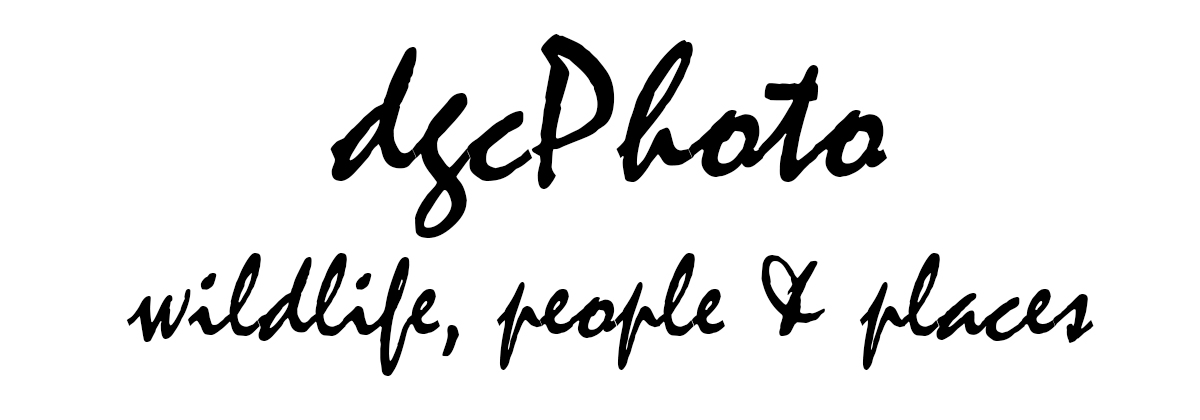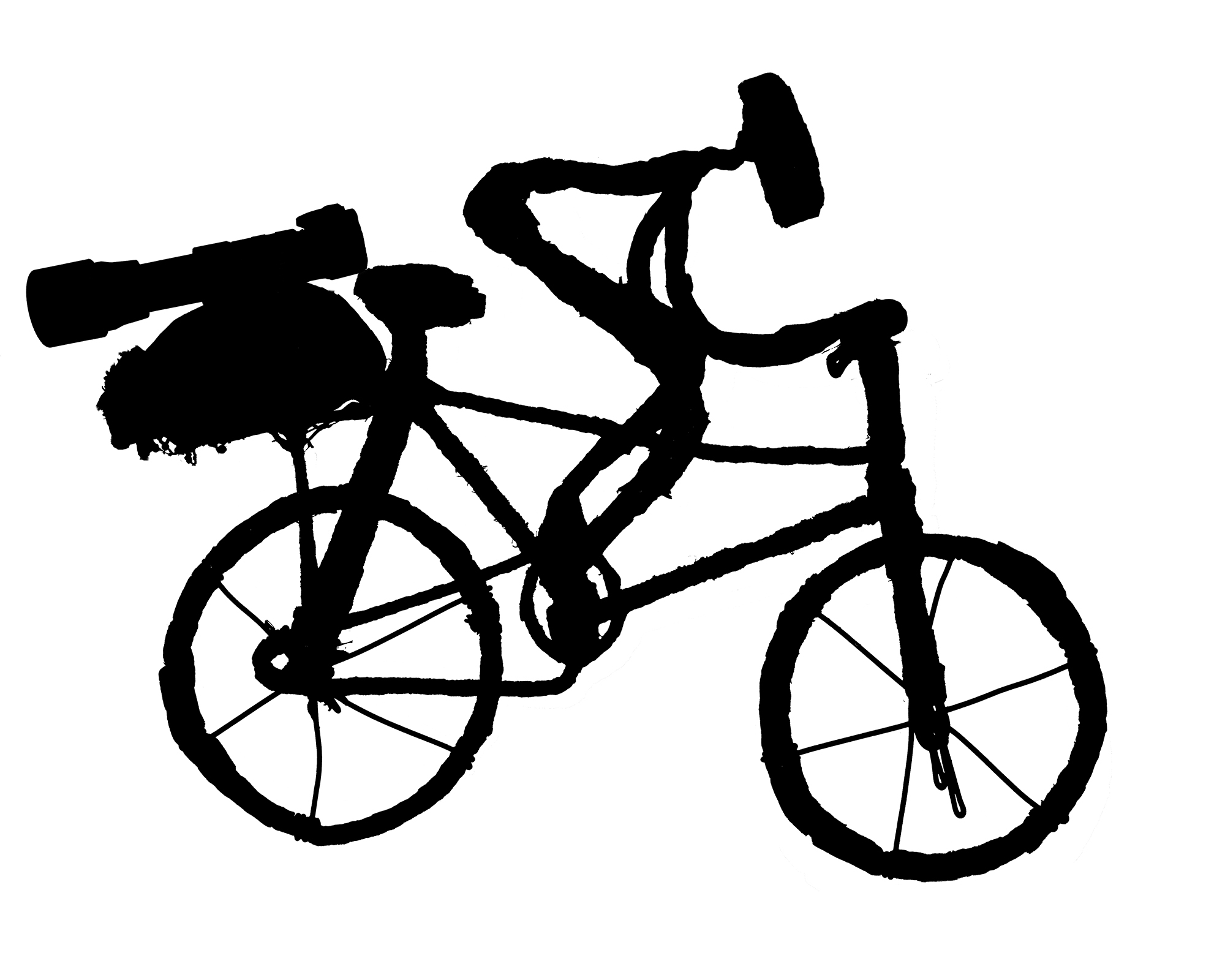by David Clarke | Jul 26, 2012 | All, Kenya, Places
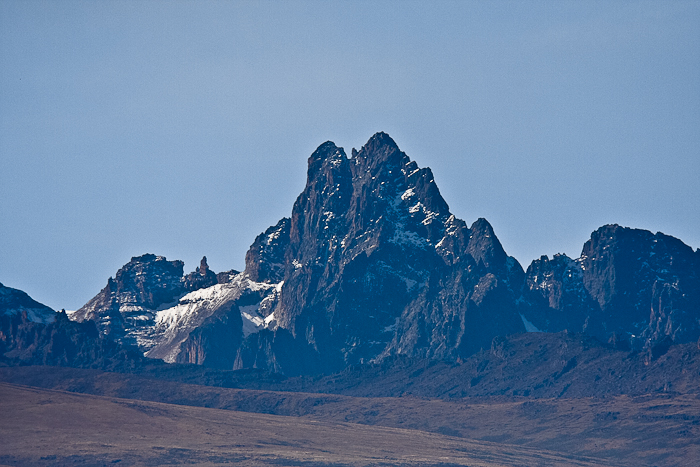
Mount Kenya is very rugged and staggering beautiful, its aspect changing dramatically as your viewpoint changes. This shot is taken from near Timau looking south-south-east towards the mountain, the higher of the two peaks – Bastian – being about twenty miles away. The view is ever-changing as clouds and mist role in and away, as snow falls around the peak and as the light and shadows alter throughout the day. From this viewpoint, the sheerness of the peaks is very vivid.
Mr Wikipedia has this to say (in part) about the mountain (but for more, google Mount Kenya and you will find a wealth of info):
Mount Kenya is the highest mountain in Kenya and the second-highest in Africa, after Kilimanjaro. The highest peaks of the mountain are Batian (5,199 metres (17,057 ft)), Nelion (5,188 metres (17,021 ft)) and Point Lenana (4,985 metres (16,355 ft)). Mount Kenya is located in central Kenya, just south of the equator, around (150 kilometres (93 mi)) north-northeast of the capital Nairobi. Mount Kenya is the source of the name of the Republic of Kenya.
Mount Kenya is a stratovolcano created approximately 3 million years after the opening of the East African rift. It was covered by an ice cap for thousands of years. This has resulted in very eroded slopes and numerous valleys radiating from the centre. There are currently 11 small glaciers. The forested slopes are an important source of water for much of Kenya.
There are eight vegetation bands from the base to the summit. The lower slopes are covered by different types of forest. Many species are endemic to Mount Kenya such as the lobelias, the senecios and the rock hyrax. An area of 715 square kilometres (276 sq mi) around the centre of the mountain was designated a National Park and listed as a UNESCO World Heritage Site in 1997. The park receives over 15,000 visitors per year.
Canon 1DMkII with Canon 300mm L IS lens and Canon 1.4 extender. ISO320 1/5000 at f4.5
[socialring]
by David Clarke | Jul 23, 2012 | African Birds, All, Kenya
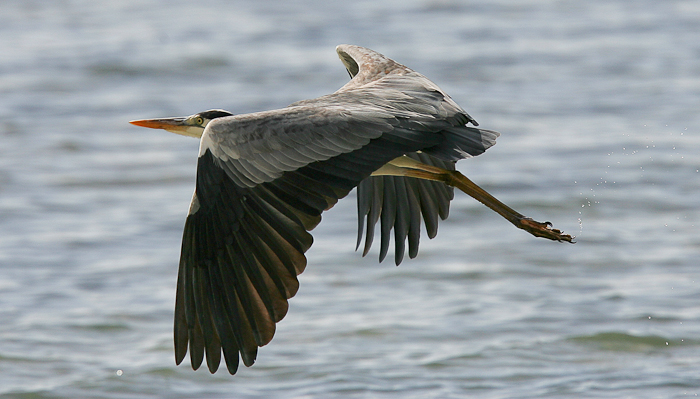
This Grey Heron (Ardea cinerea), along with some of his mates, patrols the shallows in the coral that are exposed when the tide is going out along the beach at Mtwapa, a few miles north of Mombasa.
He is quite used to people since there are fisherman around. He let me get fairly close, and then when his comfort zone was breached took to the air and flew a little way up the beach. As I approached again, he flew back the beach. We played this game for a while until he got bored, or maybe I got too hot.
For this shot, he had just taken off – note the water flying off his feet.
Canon 1DMkII with Canon 300mm L f2.8 IS lens with 1.4 extender; ISO200 f5 1/4000
[socialring]
by David Clarke | Jul 22, 2012 | All, Kenya, Places
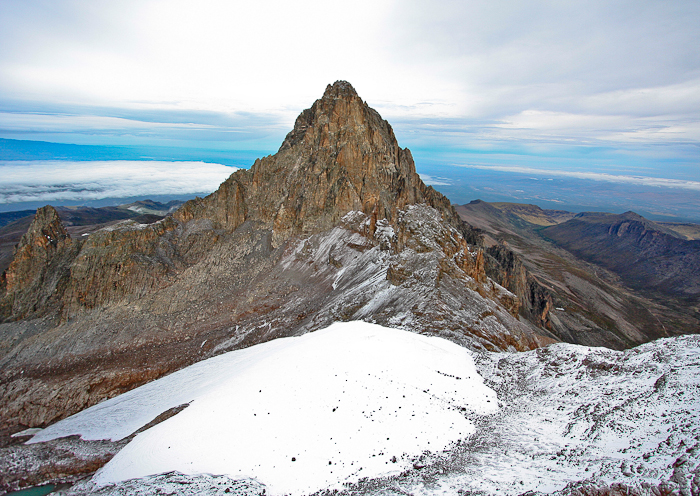
If you have ever stood in the foothills of Mount Kenya and looked in wonder at its peaks, this is what it is like from closer up – this shot was taken from a helicopter on a trip around the mountain.
We had ascended from the north and having reached the peaks, circled them anti-clockwise.
For this shot we were south-east of Nelion, (5,188 metres (17,021 ft)) the the lower of the two peaks – Batian, the higher (5,199 metres (17,057 ft)) is hidden behind it.
In the foreground is the Lewis Glacier, the largest on the mountain, although like the others it is getting smaller – it is estimated that there will be no more glaciers up there within 30 years.
To the left of the glacier at the bottom left of the image is a tarn called the Curling Pond. This is at 4790 metres (15715 ft)), from which data you get a handle on the scale of the image.
Mr Wikipedia has this to say (in part) about the mountain (but for more, google Mount Kenya and you will find a wealth of info):
Mount Kenya is the highest mountain in Kenya and the second-highest in Africa, after Kilimanjaro. The highest peaks of the mountain are Batian (5,199 metres (17,057 ft)), Nelion (5,188 metres (17,021 ft)) and Point Lenana (4,985 metres (16,355 ft)). Mount Kenya is located in central Kenya, just south of the equator, around (150 kilometres (93 mi)) north-northeast of the capital Nairobi. Mount Kenya is the source of the name of the Republic of Kenya.
Mount Kenya is a stratovolcano created approximately 3 million years after the opening of the East African rift. It was covered by an ice cap for thousands of years. This has resulted in very eroded slopes and numerous valleys radiating from the centre. There are currently 11 small glaciers. The forested slopes are an important source of water for much of Kenya.
There are eight vegetation bands from the base to the summit. The lower slopes are covered by different types of forest. Many species are endemic to Mount Kenya such as the lobelias, the senecios and the rock hyrax. An area of 715 square kilometres (276 sq mi) around the centre of the mountain was designated a National Park and listed as a UNESCO World Heritage Site in 1997. The park receives over 15,000 visitors per year.
Image taken on a Canon 40D with a Canon EFS 10-22 mm lens at 10mm; ISO 400 f4 1/1000
[socialring]
by David Clarke | Jul 21, 2012 | African Birds, All, Kenya
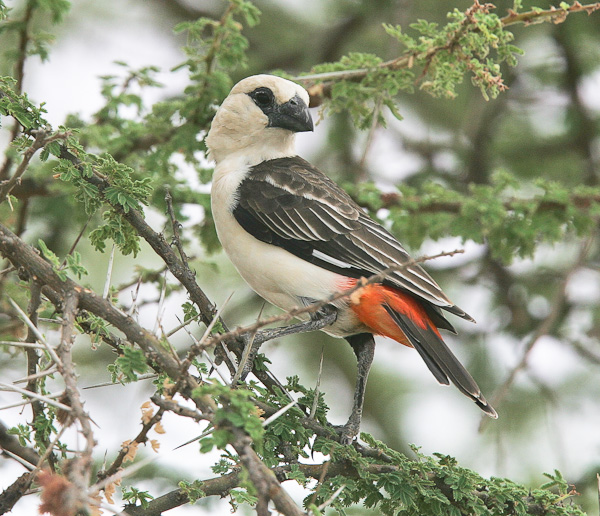
Buffalo-Weavers are large weavers with heavy bills. The _Dinemellia_ genus, of which the White-headed Buffalo-Weaver (Dinemellia dinemellia) is one is distinctly orange-red, brown and white. This bird is very distinctive, especially in flight, when its bright orange-red rump and large white wing patches are very clear. The sexes are alike. Like this one, that was spotted in Buffalo Springs, Samburu, Kenya, they are often seen on the ground or low in the trees. It certainly wasn’t too bothered by my presence and allowed me to get very close for this shot.
Canon 1D MkII with Canon 300mm f2.8L EF IS lens and Canon 1.4X extender. ISO200 1/320 at f9.
[socialring]
by David Clarke | Jul 18, 2012 | African Birds, All, Kenya
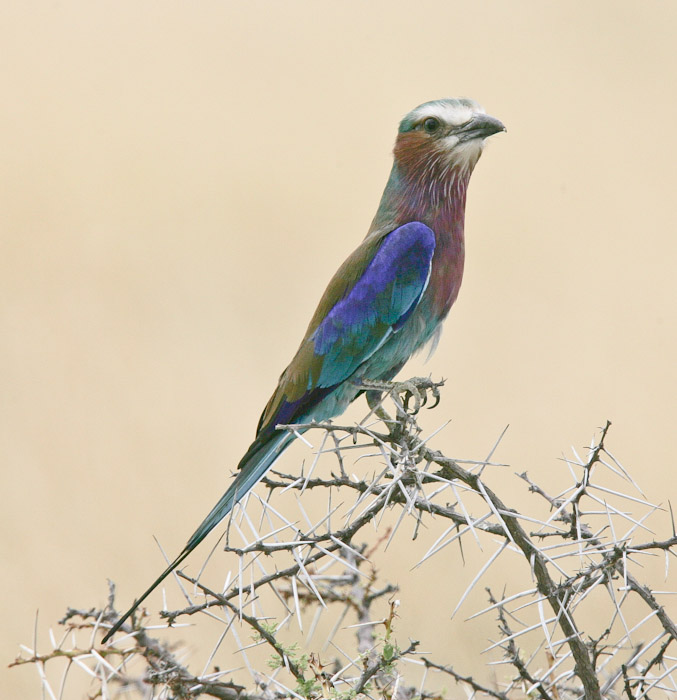
I had stopped to take some shots of the white-throated bee-eater shown on another page when this lilac-breasted roller (Coracias caudata) decided to get in on the action. He chased away the bee-eater and then clearly very aware of exactly how to pose, he positioned himself on the thorn bush, lifted one claw into a classic Victorian drawing-room stance and angled his head to look into the middle distance. He allowed me half a dozen frames before flying off, satisfied that I had captured his best side.
Photographed in Buffalo Springs, Samburu, Kenya, 13 April 2012
Canon 1DMkII with Canon 300mm f2.8L IS lens and a Canon 1.4 extender.
ISO 200 420mm f9 at 1/1000
[socialring]
by David Clarke | Jul 17, 2012 | African Birds, All, Kenya
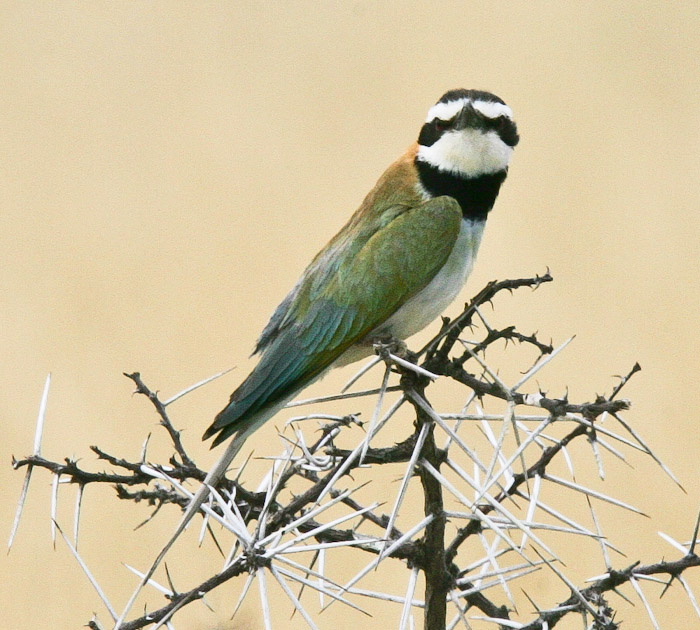
This inquisitive white-throated bee eater (Merops albicollis) had checked out his surroundings and then eye-balled me to make sure that he approved of the camera and lens. He was so engrossed that he didn’t see a lilac-breasted roller who wanted to be centre stage bearing down on him. He was evicted in a flurry of feathers and the roller got his way.
Photographed in Buffalo Springs, Samburu, Kenya on 13 April 2012
Canon 1DMkII with bee-eater approved Canon 300mm f2.8L IS lens and 1.4 extender.
ISO200 420mm f9 at 1/1000
[socialring]
